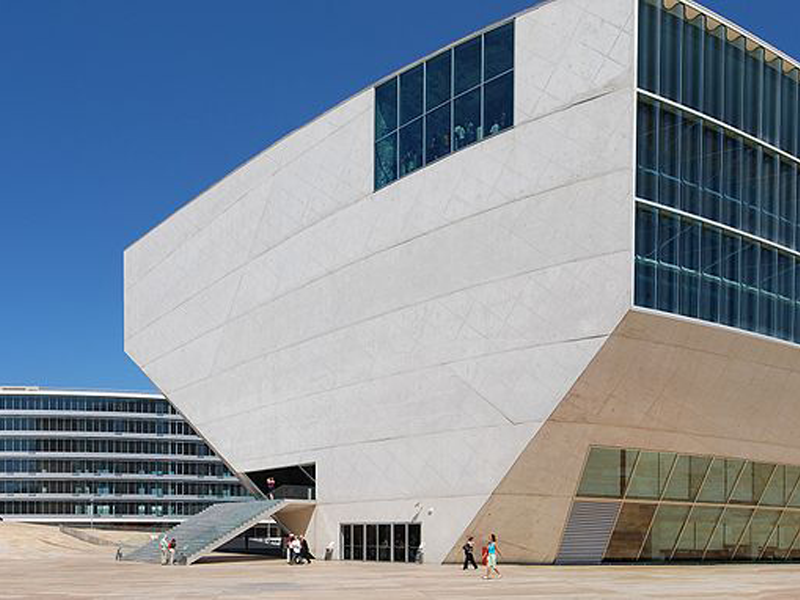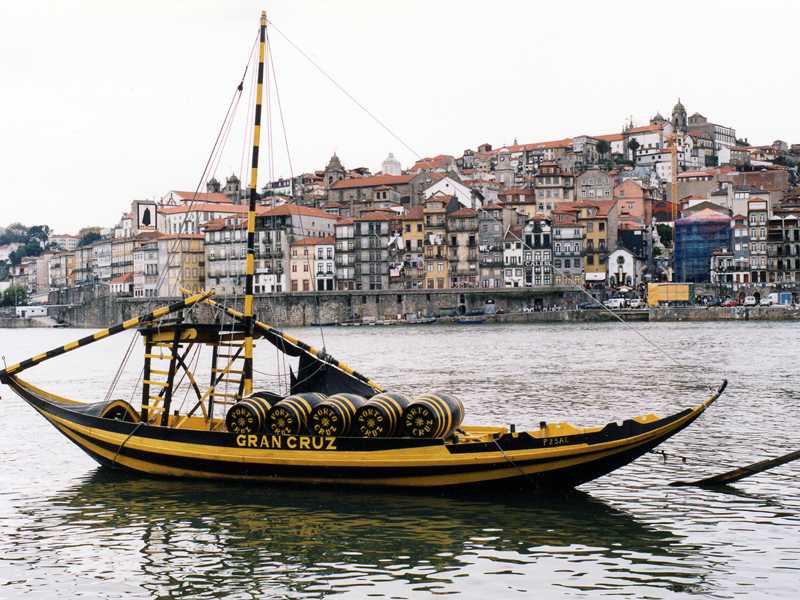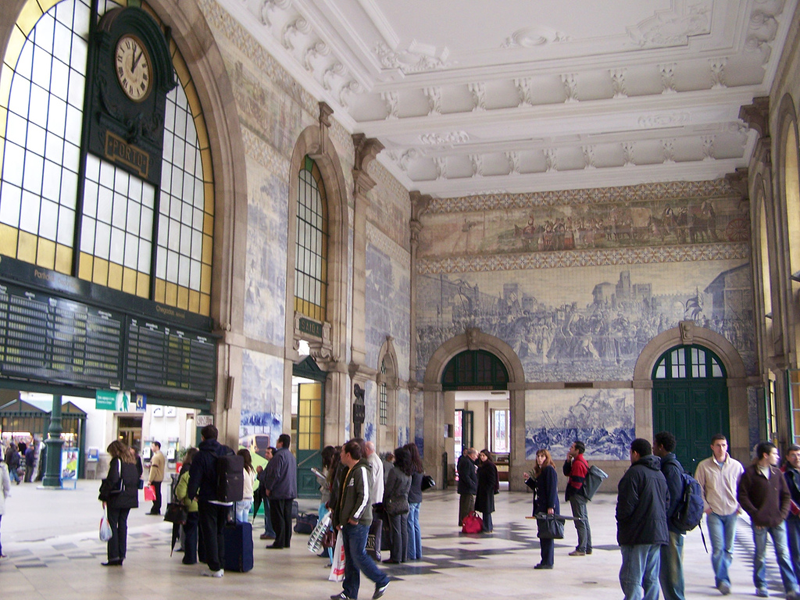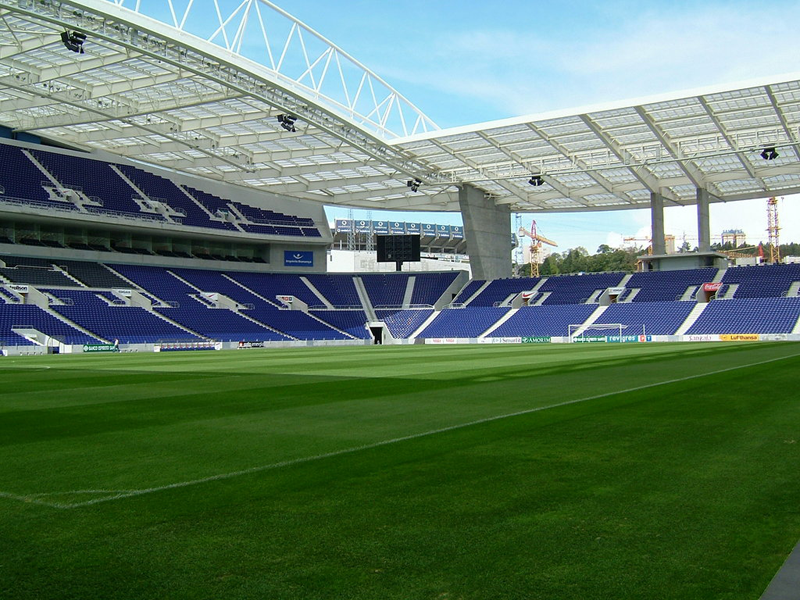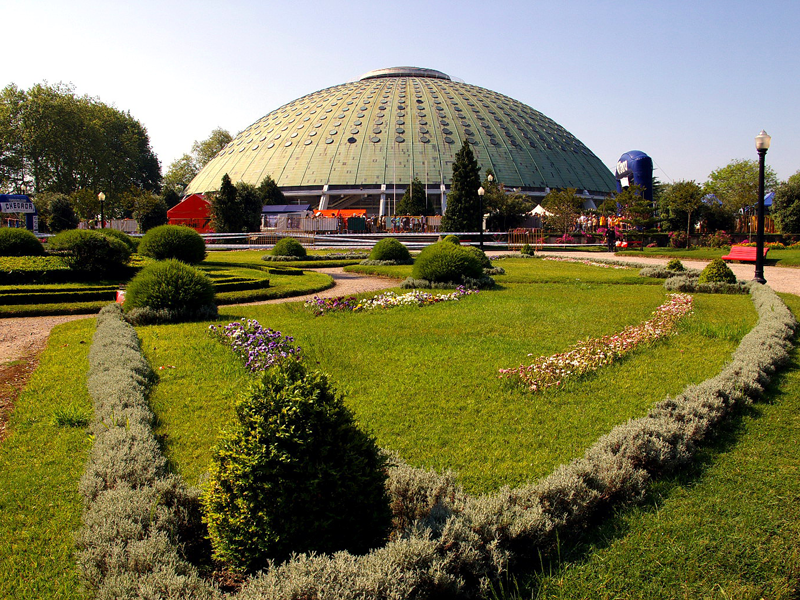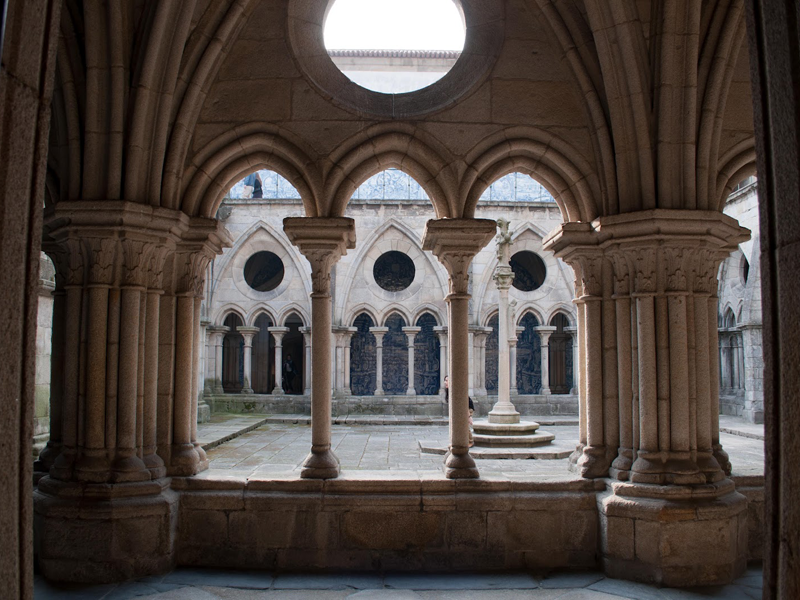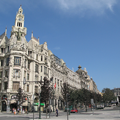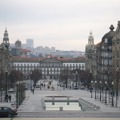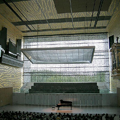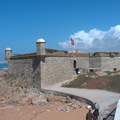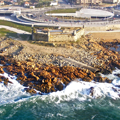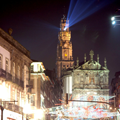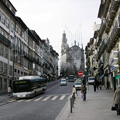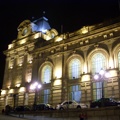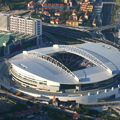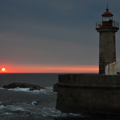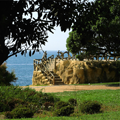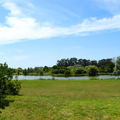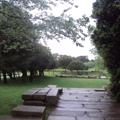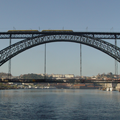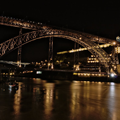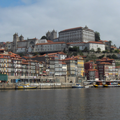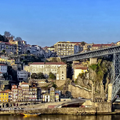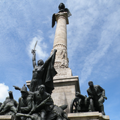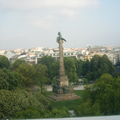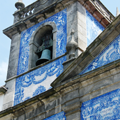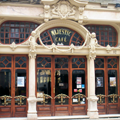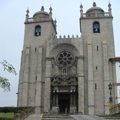History
Historic references to the city go back to the 4th century and to Roman times, although Celtic and Proto-Celtic remnants of ancient Citadels were found in the heart of where Porto now lies. In the Roman period the city developed its importance as a commercial port, primarily in the trade between Olissipona (Lisbon) and Bracara Augusta (nowadays Braga), but would fall under the Moorish Muslim invasion of the Iberian Peninsula in 711. In 868, Vímara Peres, a Christian warlord from Gallaecia and a vassal of the King of Asturias, Léon and Galicia, Alfonso III, was sent to reconquer and secure from the Moors the area from the Minho River to the Douro River, including the city of Portus Cale, later Porto and Gaia, from where the name and political entity of Portugal emerged (see also Portucale). In 868 Count Vímara Peres established the First County of Portugal (Portuguese: Condado de Portucale), after the reconquest of the region north of the Douro river.
In 1095, Teresa of León, illegitimate daughter of king Alfonso VI of Castile, married Henry of Burgundy, bringing the County of Portugal as dowry. This Condado Portucalense became the focus of the Reconquista and later became the independent Kingdom of Portugal, after eventually expanding to its current frontiers into the south as it reconquered territory back from the invading Moors under the reign of King Afonso I of Portugal in the beginning of the 1st millennium.
In 1387, this city was the scene for the marriage of João I and Philippa of Lancaster, daughter of John of Gaunt, symbolizing the long-standing military alliance between Portugal and England, the world's oldest military alliance, which still holds via NATO. At the time of his marriage the king stayed at the Church of St. Francis as a proof of his esteem for the Franciscans.
In the 14th and the 15th centuries, the shipyards of Porto contributed to the development of the Portuguese fleet. In 1415 Henry the Navigator, son of João I, left from Porto to conquest the Muslim port of Ceuta in northern Morocco. This expedition led to the exploratory voyages that he later sent down the coast of Africa. Portuenses are referred to this day as "tripeiros", in reference to the fact that higher quality meat would be loaded onto ships to feed sailors, while off-cuts and by-products such as tripe would be left behind and eaten by the citizens of Porto. Tripe remains a culturally important dish in modern day Porto.
Wine, produced in the Douro valley, was already in the 13th century transported to Porto in barcos rabelos (flat sailing vessels). In 1703 the Methuen Treaty established the trade relations between Portugal and England. It allowed English woolen cloth to be admitted into Portugal free of duty. In return, Portuguese wines imported into England would be subject to a third less duty in contrast to French imported wines. This was particularly important with regards to the Port industry. As England was at war with France it became increasingly difficult to acquire wine and so port started to become a popular replacement. In 1717 a first English trading post was established in Porto. The production of port wine then gradually passed into the hands of a few English firms. To counter this English dominance, prime minister Marquis of Pombal established a Portuguese firm receiving the monopoly of the wines from the Douro valley. He demarcated the region for production of port, to ensure the wine's quality; his was the first attempt to control wine quality and production in Europe. The small winegrowers revolted against his strict policies on Shrove Tuesday, burning down the buildings of this firm. The revolt was called Revolta dos Borrachos (revolt of the drunks) and became a symbol of the freedom spirit of the inhabitants of Porto.
Between 1732 and 1763, Italian architect Nicolau Nasoni designed a baroque church with a tower that would become its icon: Clérigos Tower.
During the 18th and 19th centuries the city became an important industrial centre and saw its size and population increase. The invasion of the Napoleonic troops in Portugal under Marshal Soult is still vividly remembered in Porto. A day after the French victory at the First Battle of Porto, on 29 March 1809, as the population fled for the advancing troops and tried to cross the river Douro over the Ponte das Barcas (a pontoon bridge), the bridge collapsed under the weight. Possibly 6,000 people drowned in the disaster. This event is still remembered by a plate at the Ponte D. Luis I. The French army was rooted out of Porto by forces commanded by Arthur Wellesley in the Second Battle of Porto, when his troops crossed the Douro river from the Mosteiro da Serra do Pilar (a former convent) in a brilliant daylight coup de main. Porto is also called "Cidade Invicta" (English: Unvanquished City) after its resistance to the Napoleonic Imperial army.
In August 1820 Porto rebelled against the English presence, resulting in a civil war in Portugal. In 1822 a liberal constitution was accepted, partly through the efforts of the liberal assembly of Porto (Junta do Porto). When Miguel of Portugal took the Portuguese throne in 1828, he rejected this constitution and reigned as an absolutist monarch. Porto rebelled again and had to undergo a siege of eighteen months between 1832 and 1833 by the Portuguese army. After the abdication of king Miguel the liberal constitution was re-established.
Unrest by republicans led to a revolt in Porto on 31 January 1891. This would result ultimately in the creation of the Portuguese Republic in 1910.
A two-level iron bridge – Dom Luís I (designed by the Belgian engineer Téophile Seyrig, from 1868 until 1879 the partner Gustave Eiffel), and a railway bridge – Maria Pia, designed by Eiffel in association with Seyrig, were constructed, as well as the central railway station (São Bento, considered to be one of the most beautiful in Europe, ornamented with lavish painted tiles). A higher learning institution in nautical sciences (Aula de Náutica, 1762) and a stock exchange (Bolsa do Porto, 1834) were established in the city but would be discontinued later.
For having resisted a military invasion in the 19th century by the Imperial Napoleonic Armies, the city is now known as The Unvanquished City (A Cidade Invicta).
Map
-
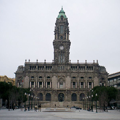
Aliados Avenue
Avenida dos Aliados is the heart and soul of Oporto. It is the place where the locals (portuenses) get together to celebrate special occasions. At the top of the avenue stands the City Hall, begun in 1920.
-
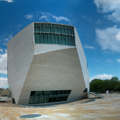
House of Music
This twelve-storey, irregular-shaped building was designed by world-renowned architect Rem Koolhaas exclusively for musical performances. It opened in 2005 and for admirers of architectural marvels it justifies a visit to Oporto on its own.
-
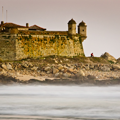
Queijo Castle
Built in the 17th century to protect the coast from the pirates of North Africa, it is located on a cheese-shaped rocky hill, thus obtaining the name Castelo do Queijo (Cheese Castle).
-
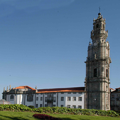
Clérigos Tower
Clérigos church tower was the tallest structure in Portugal when completed in 1763, and as the main feature of the city's skyline, ships used it as a guide when coming into Cais da Ribeira.
-
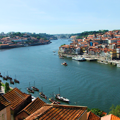
Douro River
The Douro is one of the major rivers of the Iberian Peninsula, flowing from its source near Duruelo de la Sierra in Soria Province across northern-central Spain and Portugal to its outlet at Porto.
-
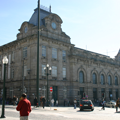
São Bento Train Station
The first train arrived here in 1896, but the building (designed with a French Renaissance touch) was only officially inaugurated in 1916 where a convent once stood.
-
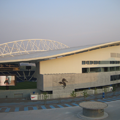
Dragon Stadium
Dragon Stadium is characterized by an elegant frame of 21 000 meters squared of azulejos, which are the typical white and sky-blue Portuguese tiles.
-
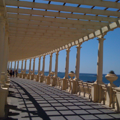
Foz
Foz is the most sophisticated district of Oporto, with a multitude of ocean-front bars, cafés, clubs and restaurants.
-
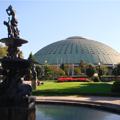
Crystal Palace
This beautifully landscaped park is dominated by a huge domed pavilion built in 1956 which replaced the 19th century iron-and-glass "Crystal Palace." Today's pavilion serves as a venue for concerts and sporting events.
-
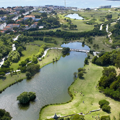
City Park
The City Park in Porto is country’s biggest urban park. It stretches from the end of Avenida da Boavista, Cheese castle to the maritime walk connecting Foz quarter to Matosinhos.
-
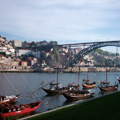
D Luiz I Bridge
Oporto's iconic bridge opened in 1886, when it held the record for the longest iron arch in the world. Used to cross the river between the center of Oporto and the spectacular city views and port wine warehouses of Vila Nova de Gaia.
-
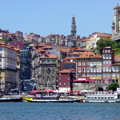
Ribeira
The alluring district of Ribeira is made up of medieval streets and seedy alleyways. It is a crumbling but fascinating place, ending at a riverfront square ("Praça da Ribeira").
-
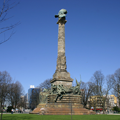
Boavista Roundabout
Rotunda da Boavista is a large roundabout in Porto, Portugal. Its official name honours Joaquim Augusto Mouzinho de Albuquerque, a Portuguese soldier that fought in Africa during 19th century.
-
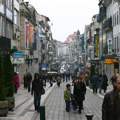
Santa Catarina Street
This mostly-pedestrianised shopping street is a magnet for both locals and tourists. Most come simply for a stroll, to shop, or to seek refreshment at the wonderful Café Majestic.
-
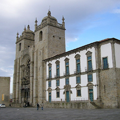
Porto Cathedral
Oporto's austere fortress-like cathedral is where Prince Henry the Navigator was baptised and where King John I married the English Princess Philippa of Lancaster in the 14th century.
Map > Aliados Avenue
The imposing Avenida dos Aliados is the heart of the city, a sloping boulevard lined with grand buildings and a central promenade. Most of the buildings are hotels or main branches of the country's major banks, while the central promenade used to be a garden but was remodelled in 2006 by renowned architect Alvaro Siza Vieira who also designed the city's Serralves Museum.
At the top of the avenue stands the Town Hall, a palatial building with a tall bell tower (70m high). Made of granite and marble, its design was influenced by municipal architecture of Flanders and France. In front of the building is a modernist statue of Portuguese writer Almeida Garrett.
Map > House of Music
This twelve-storey, irregular-shaped building was designed by world-renowned architect Rem Koolhaas exclusively for musical performances. It opened in 2005 and for admirers of architectural marvels it justifies a visit to Oporto on its own.
The striking white concrete structure is an inventive building. Inside the 1,300-seat auditorium of perfect acoustics is a baroque organ pinned to the wall, and the VIP room has hand-painted blue tiles, blending contemporary minimalism with traditional touches. You can see it all in a highly recommended guided tour. Casa da Musica Top international orchestras have already played here, and there is also a resident company. On the top floor is one of the most sophisticated restaurants in the city. From outside some have described the building as looking like a meteorite landed in the middle of the city.
Map > Queijo Castle
Built in the 17th century to protect the coast from the pirates of North Africa, it is located on a cheese-shaped rocky hill, thus obtaining the name Castelo do Queijo (Cheese Castle).
During the Civil War period (1832-1834), the castle was bombed by the Liberal ships, which almost made it disappear. Today the remains of this peculiar milatary building are available to tour.
Map > Clérigos Tower
Clérigos church tower was the tallest structure in Portugal when completed in 1763 (the national record is now Lisbon's Vasco da Gama Tower), and as the main feature of the city's skyline, ships used it as a guide when coming into Cais da Ribeira.
It's a remarkable baroque landmark designed by the Italian architect Nasoni, who also designed the adjoining church. It has become a popular tourist attraction for the aerial view of the city from the top (75 meters up - after a steep flight of 240 steps). Inside the church, the highlight is a polychromatic Baroque-Rococo marble retable.
Map > Douro River
The Douro is one of the major rivers of the Iberian Peninsula, flowing from its source near Duruelo de la Sierra in Soria Province across northern-central Spain and Portugal to its outlet at Porto.
The Douro vinhateiro, an area of the Douro Valley in Portugal, has been classified by UNESCO as a World Heritage Site. Traditionally, the wine was taken down river in flat-bottom boats called rabelos to be stored in barrels in cellars in Vila Nova de Gaia, just across the river from Porto. In the 1950s and 1960s, dams were built along the river ending this river traffic on Spanish and border sections. Now Port wine is transported in tanker trucks.
Map > São Bento Train Station
The first train arrived here in 1896, but the building (designed with a French Renaissance touch) was only officially inaugurated in 1916 where a convent once stood. This is the city's most central station, standing downtown just around the corner from the monumental Avenida dos Aliados.
Around 20,000 magnificent tiles alluding to the history of transport and Portugal cover most of the atrium. They're the work of artist Jorge Colaço and date from 1916. The most remarkable panels are those showing King João I and Queen Philippa of Lancaster by the city's cathedral in 1387, Prince Henry the Navigator conquering Ceuta in Morocco, and a representation of the Battle of Arcos de Valdevez.
Map > Dragon Stadium
Estádio do Dragão (Dragon Stadium), is characterized by an elegant frame of 21 000 meters squared of azulejos, which are the typical white and sky-blue Portuguese tiles. The first azulejos can be found at the entrance and looks like a big dragon that gives name to the stadium.
The Dragon Stadium has a seating capacity of 50 106 which is divided between two levels of reinforced concrete tiers. Only the lower one is continuous along the perimeter of the playing field's rectangle. The upper tier appears to gravitate on the lower one due to a sense of light that is created by a curved and streamlined profile towards their ends.
Map > Foz
Foz is the most sophisticated district of Oporto, with a multitude of ocean-front bars, cafés, clubs and restaurants. You may begin a walk by the waterfront at Jardim do Passeio Alegre on Avenida D. Carlos I. This is an elegant garden entered through two 19th century obelisks and surrounded by palm trees, various sculptures, two mini-golf courses, and a bandstand that hosts philharmonic concerts during the summer.
This area retains a village-like feel, but eventually when the waterfront avenue becomes Avenida do Brasil, the wide open spaces, big attractive houses, beaches, and cafés give it the look of a resort. The beachfront cafés remain open and popular during the winter, and locals come here to jog, ride a bike, skate, or socialize especially on Sunday mornings.
Map > Crystal Palace
This beautifully landscaped park is dominated by a huge domed pavilion built in 1956 which replaced the 19th century iron-and-glass "Crystal Palace." Today's pavilion serves as a venue for concerts and sporting events. It is surrounded by a lake, flowerbeds, and roaming peacocks, all overlooking the Douro River, of which there are superb views.
There is also a multimedia library, an auditorium, a cafeteria, and the Romantic Museum. Across the street from the park entrance is the gateway to the city's art galleries district (Rua Miguel Bombarda has the largest number).
Map > City Park
The City Park in Porto is country’s biggest urban park. It stretches from the end of Avenida da Boavista, Cheese castle to the maritime walk connecting Foz quarter to Matosinhos. In an 80ha area, we can find walking spots, sport zones, lakes, fountains and grass areas. In order to reach the City Park, you have three options: take Avenida da Boavista, Rua da Vilarinha or the inner Circunvalação road.
The Water Pavilion is one of the highlights of this green lung of the city. This pavilion was on exhibition during World Exhibit Expo’98 in Lisbon. The project dates back to the 60’s of the 20th century, but it only opened its doors to the public in 1993.
Map > D Luiz I Bridge
Oporto's iconic bridge opened in 1886, when it held the record for the longest iron arch in the world. Today the metro crosses the upper level, while the lower level is used by cars and pedestrians to cross the river between the center of Oporto and the spectacular city views and port wine warehouses of the municipality of Vila Nova de Gaia.
There are four other bridges in the city, best seen on a Douro River cruise. The most famous of all is the impressive Dona Maria Pia Bridge, also an iron railway bridge, completed in 1876. Designed by Gustave Eiffel before he built the famous Paris tower, and named after King Luís I's wife, it held the world record for the largest span for seven years.
Map > Ribeira
The alluring district of Ribeira is made up of medieval streets and seedy alleyways. It is a crumbling but fascinating place, ending at a riverfront square ("Praça da Ribeira").
With photogenic traditional boats floating at the quayside overlooked by colorful ancient houses, this is the most picturesque spot in the city and the place everyone loves -- UNESCO did too, and declared it a World Heritage Site.
In the center of the square is a bronze cube surrounded by café tables, and just around the corner on Rua da Alfândega is "Casa do Infante" (or "House of the Prince"), where Prince Henry the Navigator was born in 1394.
Map > Boavista Roundabout
Rotunda da Boavista is the nickname for the Praça de Mouzinho de Albuquerque, a large roundabout in Porto, Portugal. Its official name honours Joaquim Augusto Mouzinho de Albuquerque, a Portuguese soldier that fought in Africa during 19th century.
A column in the middle of the square (Monumento aos Heróis da Guerra Peninsular) commemorates the victory of the Portuguese against the French troops that occupied Portugal during the Peninsular War (1808–1814). The column, slowly built between 1909 and 1951, is a project by celebrated Porto architect José Marques da Silva and sculptor Alves de Sousa.
Map > Santa Catarina Street
This mostly-pedestrianised shopping street is a magnet for both locals and tourists. Most come simply for a stroll, to shop, or to seek refreshment at the wonderful Café Majestic.
This could be seen as the city's shopping center, although there is also a mall halfway down the street. That's "Via Catarina", with international retailers such as "H&M" and "Zara," as well as a very attractive food court with restaurants built into what was made to look like traditional Portuguese houses.
Map > Porto Cathedral
Oporto's austere fortress-like cathedral is where Prince Henry the Navigator was baptised and where King John I married the English Princess Philippa of Lancaster in the 14th century. The building has its origins in the 12th century, although it underwent many alterations over time.
The Gothic rose window is the only part of the original façade that remains, especially after Baroque alterations in the 18th century. The loggia on the north front was added at that time, as was the extraordinary altarpiece inside, entirely made up of silver. The Gothic cloisters are more outstanding than the church itself, covered with magnificant blue and white tiles from the 18th century.
Contact

Faculdade de Engenharia da Universidade do Porto
Rua Dr. Roberto Frias, s/n 4200-465 Porto
PORTUGAL
email
André Dias ([email protected])
Pedro Machado ([email protected])

